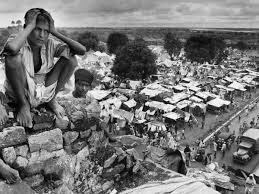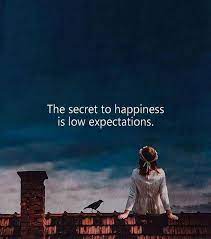Gowhar Geelani
 For almost previous seven decades, 68 years to be precise, India’s argument while laying its full claim on erstwhile princely state of Jammu & Kashmir has been that the Pakistani raiders (Tribals) were the first “aggressors” at the time of India-Pakistan Partition in 1947, which subsequently led to war, rioting, massacre of Jammu Muslims, destruction on a large scale, and division of the Himalyan region.
For almost previous seven decades, 68 years to be precise, India’s argument while laying its full claim on erstwhile princely state of Jammu & Kashmir has been that the Pakistani raiders (Tribals) were the first “aggressors” at the time of India-Pakistan Partition in 1947, which subsequently led to war, rioting, massacre of Jammu Muslims, destruction on a large scale, and division of the Himalyan region.
But the recent revisionist history seriously challenges India’s argument and official claim on Kashmir.
Christopher Snedden — renowned Australian historian, author, politico-strategic analyst and academic specialising in South Asia— in his book ‘Kashmir: The Unwritten History’ “offers a new perspective about who started the dispute over the international status of Jammu & Kashmir (J&K).”
Most historical accounts claim that the Pakistani tribesmen, aka Pukhtoon or Qabali raiders, instigated the Kashmir dispute by trying to ‘liberate’ Jammu and Kashmir, but Christopher Snedden claims that “people from the Jammu Province of J&K— Jammuites — actually started it.”
“After Partition in 1947, Jammuites engaged in three significant actions. The first was a Muslim uprising in the Poonch area of western Jammu Province against the unpopular Hindu ruler, Maharaja Hari Singh. The second was serious inter-religious violence throughout the province that killed or displaced large numbers of people from all religious communities. The third was the creation of Azad (Free) Jammu and Kashmir in the area of western Jammu Province that the ‘rebels’ had ‘freed’ or liberated. These significant actions all took place before the Maharaja acceded to India on 26 October 1947,” Snedden writes.
The Kashmir conflict has long been considered a “nuclear flashpoint” between India and Pakistan. Kashmir’s possible resolution or status quo very much defines and determines the future of peace and stability in volatile South Asia. It is seen as a complex issue which involves territory, borders, religion, nationalism, democracy, ethnicity, identity and various other multiple factors.
Multiple identities, which include ‘Kashmiri nationalism’ and ‘religious identity’ of the majority community, have played a role in mobilising public opinion and shaping various political struggles in the conflict-ridden Jammu & Kashmir since 1931.
Even in the anti-Maharaja uprising of 1931, Jammu Muslims played a significant role, under the leadership of pro-Pakistan Chaudhry Ghulam Abbas.
Chaudhry Abbas, a lawyer by qualification and influential politician by profession, was elected as first secretary general of the All Jammu and Kashmir Muslim Conference, Kashmir’s first political party launched on 16 October 1932. Sheikh Mohammed Abdullah, also known as ‘Sher-i-Kashmir’ [Lion of Kashmir] by the natives, was chosen as the party’s first president.
The party name, Muslim Conference, gave Kashmiris a religious identity, assertion and motivation to unite under one platform against what was being largely seen as ‘despotic’ Dogra regime.
With an aim to mobilise public opinion against ‘tyrannical’ Dogra rule in Jammu & Kashmir, Abdullah would commence his public speeches while reciting verses from the holy book of Muslims, Koran (Quran), in a melodious voice.
Abdullah, as president of the Muslim Conference Party, in his presidential address to the members, claimed that his party had come into existence to struggle for the rights of all oppressed sections of the Kashmiri society, not Muslims alone. The Muslim Conference was not a communal party, he maintained.
In 1938-39, he himself launched a vigorous campaign to convert the Muslim Conference into National Conference to give his party a secular face and accommodative profile for a wider reach.
This conversion, according to late Khwaja Sanaullah Bhat’s historical account ‘Ahad Nama-i-Kashmir’ led to disunity and fissures among the top Kashmiri leadership. Many of Abdullah’s friends and admirers deserted him and joined a revived faction of the Muslim Conference led by a popular Muslim cleric and head priest, Mirwaiz Moulana Mohammed Yusuf Shah.
As Abdullah started developing cordial relations with his bosom friend, Pandit Jawaharlal Nehru, and the Congress Party, Chaudhry Abbas withdrew his support to the National Conference. Historians say that Muslim Conference was revived under Abbas’s leadership. He would vociferously campaign for Kashmir’s merger with Pakistan.
In his book “Kashmir Conflict and Muslims of Jammu”, the Jammu based journalist and author Zafar Choudhary writes: “In a particular democratic set-up the Muslims of Jammu feel isolated on both counts – first, within Jammu as being Muslims who the majority community of the region sees as essential part of a Muslim hegemony biased against them, and second, as residents of Jammu province who are seen by the valley as people outside the definition of ‘Kashmiri Nationalism’.”
Choudhary contends that the story of Jammu Muslims is probably more painful than of others. “What makes the story of Jammu more painful is that …the loss and pain of Jammu makes just a passing reference to the political discourse on Kashmir conflict.”
Author Snedden argues that “In 1947, people in Jammu engaged in three major actions that divided Jammu and Kashmir and confirmed that the princely state was not deliverable in its entirety to India or Pakistan The first was a pro-Pakistan, anti-Maharaja uprising by Muslim Poonchis in western Jammu that ‘liberated’ large parts of this area from the Maharaja’s control. The second was major inter-religious violence in the province that caused upheaval and death, including a possible massacre of Muslims. The third was the creation of the Provincial Azad (Free) Government in areas liberated or ‘freed’ by the Poonch uprising.”
All the three “significant” actions, Snedden writes, occurred during the “ten-week interregnum” between the creation of India and Pakistan on 15 August 1947 and Maharaja Hari Singh’s ‘controversial’ accession to India on 26 October 1947. The author claims that these actions “instigated the ongoing dispute over J&K’s international status — the so-called Kashmir dispute — before Maharaja Hari Singh’s accession to India.”
India has without fail claimed that all of the trouble that occurred in Jammu and Kashmir only began after, and as a result of, the “invasion of Kashmir Province on 22 October 1947 by Pakistani raiders: Muslim Pukhtoon tribesmen from Pakistan.” But Snedden’s account challenges this Indian claim.
Pakistan’s official position is that Jammu & Kashmir remains its ‘jugular vein’, while the Indian government’s stated claim is that J&K is its ‘integral part’.





